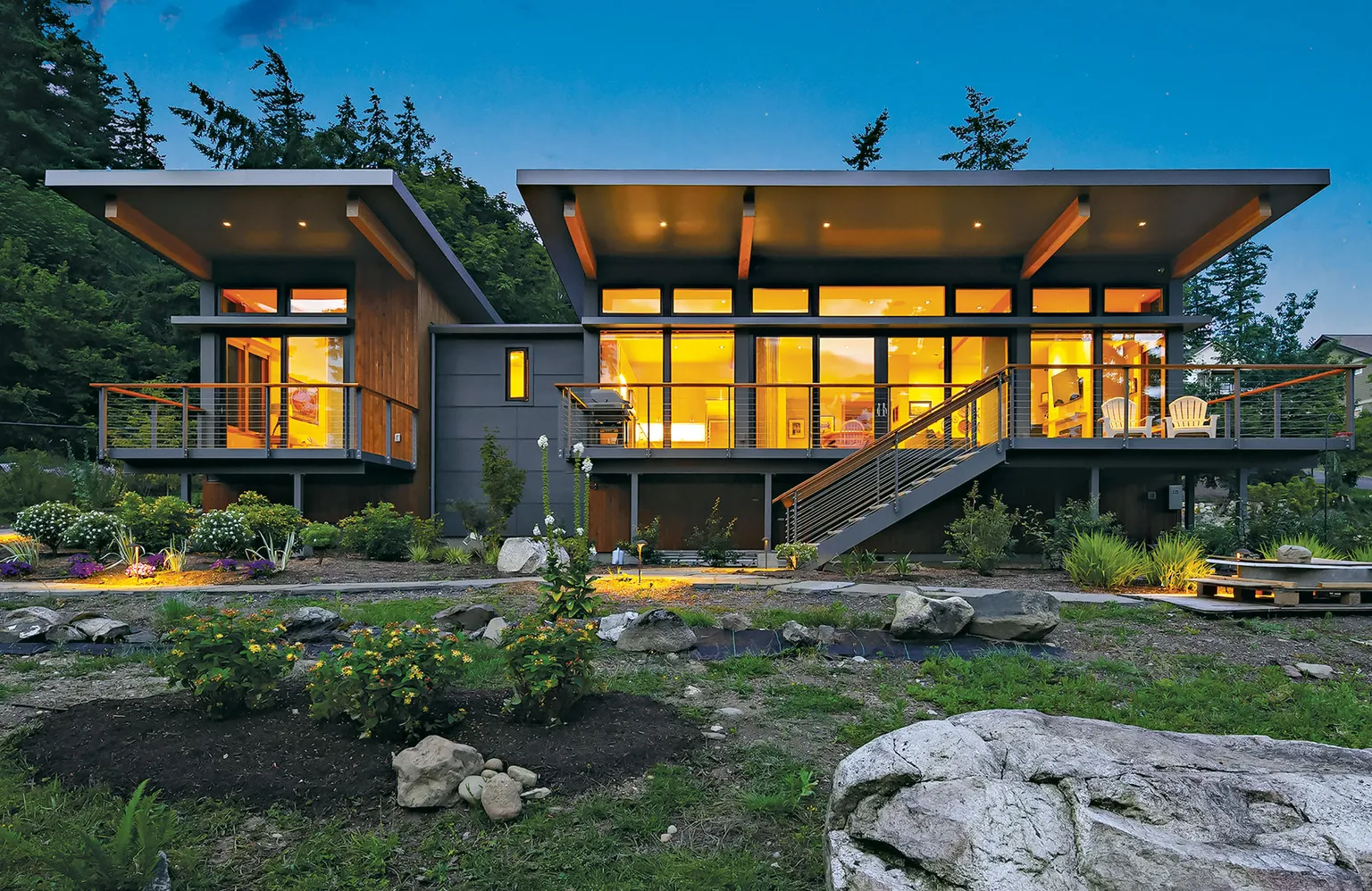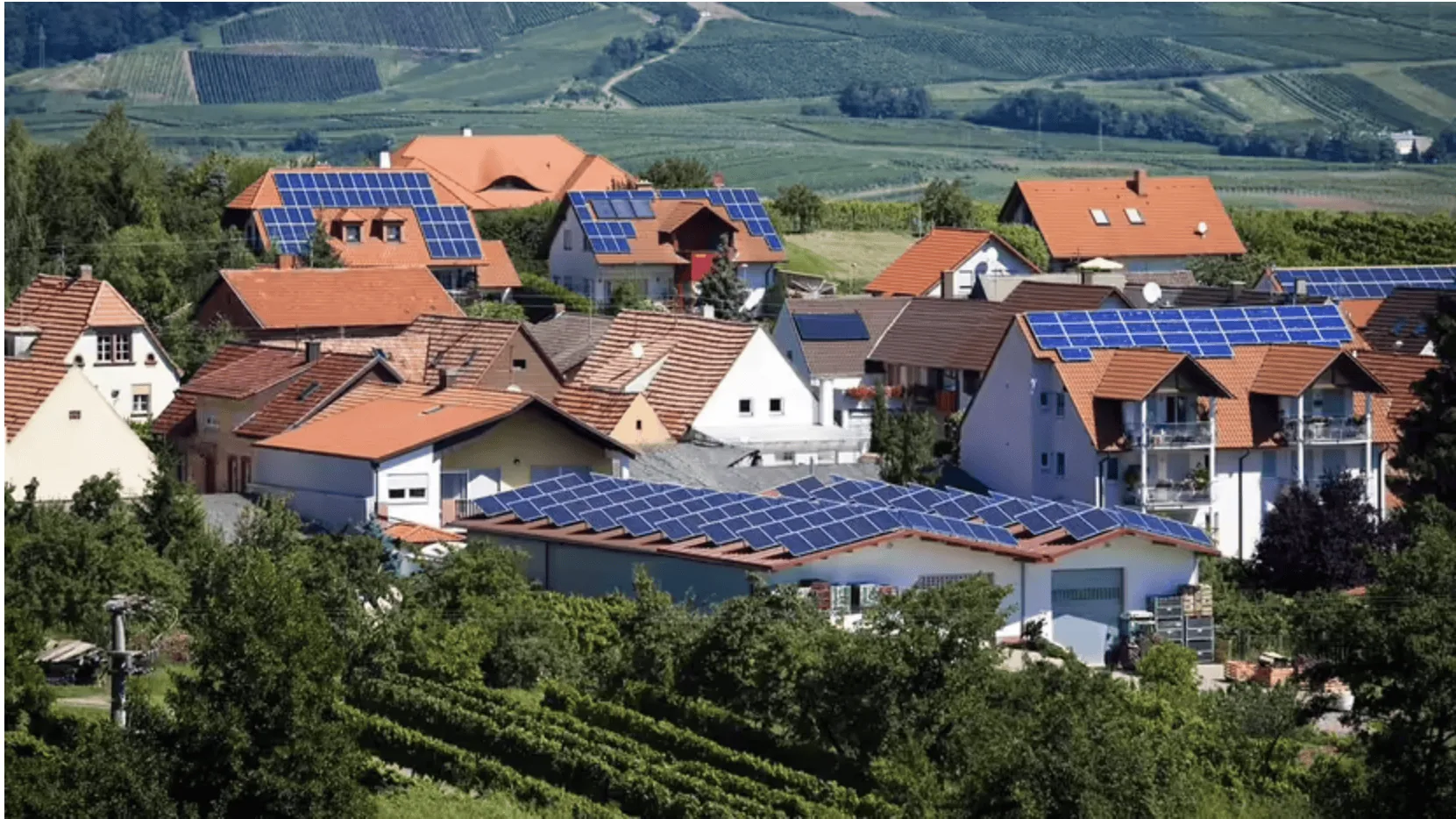
- Discover how eco-conscious homes are transforming living spaces with solar panels, rainwater systems, sustainable materials, and energy-efficient designs. Explore the latest trends in green architecture for a sustainable future.
In our journey towards a sustainable future, it’s becoming increasingly evident that every decision we make, including how we construct and manage our homes, has a profound impact.
This article invites you to explore the fascinating world of eco-conscious living, where homeowners are leading the charge towards sustainability. By integrating innovative features such as solar panels to harness clean energy, rainwater harvesting systems to conserve water, and energy-efficient appliances to reduce consumption, these homeowners are contributing to environmental preservation while also creating healthier and more economical living spaces.
Join us as we delve deeper into these eco-friendly advancements that are essential steps towards a greener and more sustainable tomorrow.
1/ Building Materials
Incorporating sustainable building materials is crucial in eco-conscious homes. Materials such as bamboo, recycled steel, and reclaimed wood not only reduce environmental impact but also add unique aesthetic qualities to homes. Bamboo, for instance, is a fast-growing, renewable resource that is both durable and versatile, making it an excellent choice for flooring, cabinetry, and even structural elements.
Recycled steel reduces the need for new metal production, significantly cutting down on energy consumption and greenhouse gas emissions. Reclaimed wood offers a rustic charm while giving new life to materials that might otherwise go to waste, preserving natural resources and reducing landfill waste.
2/ Insulation and Ventilation
Proper insulation and ventilation are key components of energy-efficient homes. Using eco-friendly insulation materials like cellulose or sheep’s wool can significantly reduce energy consumption by maintaining a consistent indoor temperature.
Cellulose insulation, often made from recycled newspaper, is treated to be fire and pest-resistant, providing a safe and effective barrier against temperature fluctuations. Sheep’s wool is another natural option, known for its excellent insulating properties and ability to regulate humidity.
Additionally, designing homes with natural ventilation in mind can decrease the reliance on artificial cooling and heating systems. Cross-ventilation techniques, such as strategically placed windows and vents, promote airflow and reduce the need for air conditioning, further lowering energy usage.
3/ Green Roofs and Vertical Gardens
Green roofs and vertical gardens are becoming increasingly popular in urban settings. These features not only improve air quality but also provide natural insulation and reduce the urban heat island effect.
Green roofs, covered with vegetation, help manage stormwater by absorbing rainfall, reducing runoff, and filtering pollutants. They also offer additional insulation, keeping buildings cooler in the summer and warmer in the winter, thus reducing energy consumption.
Vertical gardens, or living walls, are equally beneficial. They can be installed on exterior or interior walls, adding greenery to spaces with limited ground area. These gardens improve air quality by absorbing carbon dioxide and releasing oxygen, and they also act as natural air purifiers by trapping dust and pollutants.
4/ Solar panels

Energy is essential for our daily lives, but the environmental crisis raises concerns about our reliance on non-renewable energy sources, which have a significant impact on the environment.
Think about it: that charger you leave plugged in all the time, even when not in use, or that ceiling fan running non-stop, both use electricity that mostly comes from fossil fuels. Renewable energy sources are still not widely used because they are expensive for the average person.
However, we’re seeing more new homeowners using solar panels. Solar panels are becoming popular because they are a sustainable solution that reduces reliance on fossil fuels and provides clean, renewable energy. In the long run, they lower energy costs and have a positive impact on the environment.
5/ Rainwater systems

Rainwater systems are becoming increasingly common in new homes, representing a significant stride towards eco-conscious living. These systems are designed to capture rainwater from various surfaces like roofs, which is then stored for future use. From simple setups like rain barrels to more sophisticated configurations with large tanks supplying water to the entire house, the options are diverse.
This eco-friendly initiative holds immense value for homeowners. Apart from conserving a substantial amount of water, a critical need given the planet’s increasing frequency of droughts, it also leads to significant savings on water bills. Considering the benefits, integrating a rainwater system into your next home feature is a compelling choice for sustainability-minded individuals.
6/ Sustainable Practices

People are increasingly making their homes more sustainable and eco-friendly by incorporating energy-efficient appliances and adopting systematic eco-friendly behaviours.
They’re mindful about completely turning off their computers, TVs, printers, etc., by unplugging them at night and during periods of non-use, recognising that simply pressing “off” isn’t sufficient. They systematically turn off lights when leaving a room, maximising the use of natural daylight and optimising its contribution. Adjusting lamp brightness according to their needs, they prefer LED bulbs.
They remember to close shutters at night and during summer to reduce the need for air conditioning, thereby preserving the house’s coolness. Moreover, they prioritise purchasing electrical appliances with environmental labels, such as the TCO label for headphones. These labels ensure that products are easily repairable and recyclable, energy-efficient during use, and free from harmful substances.
7/ Smart Home Technology
Integrating smart home technology can greatly enhance the efficiency of eco-conscious homes. Smart thermostats, lighting systems, and appliances allow homeowners to monitor and control their energy usage remotely. These technologies can learn usage patterns and optimise energy consumption, leading to substantial savings and a lower environmental impact.
Smart irrigation systems, for example, can adjust watering schedules based on weather forecasts, preventing water wastage. Similarly, smart power strips can detect when devices are in standby mode and cut off power, eliminating phantom energy consumption.
8/ Sustainable Landscaping
Sustainable landscaping practices, such as xeriscaping and the use of native plants, can reduce water usage and create habitats for local wildlife.
Xeriscaping involves designing landscapes that require minimal irrigation, often by using drought-resistant plants and efficient irrigation systems. Native plants are adapted to the local climate and soil conditions, making them more resilient and requiring less maintenance. Incorporating permeable paving materials in landscaping allows rainwater to seep into the ground, reducing runoff and recharging groundwater supplies. Additionally, composting organic waste from the garden enriches the soil, promoting healthy plant growth without the need for chemical fertilisers.
9/ Community and Education
Promoting community initiatives and educational programmes about sustainability can have a broader impact. Homeowners can participate in or organise local workshops on sustainable living, share resources, and support each other in making eco-friendly choices.
Community gardens, recycling programmes, and local sustainability groups can foster a sense of collective responsibility and action. Educational initiatives, such as school programmes and public awareness campaigns, can inform and inspire the next generation to adopt sustainable practices. By creating a community that values and practices sustainability, we can amplify our individual efforts and make a more significant impact.
Taking Small Steps Towards a Greener Future
At the end of the day, making these changes and committing to this lifestyle may come with a cost, and I understand that not everyone is able to afford it.
But it’s important to engage at your own level. Recycling, consuming less, and monitoring your carbon footprint don’t cost anything. In fact, they’re beneficial for both you and the environment.
Each of us must work within our means and capabilities. We no longer have any excuses; it’s time to wake up to the planet’s plea for help. Play your part in saving our planet because when we work together, it will make a difference!
Click the link below for more content like this!
https://pokok.asia/unleashing-the-power-of-compost/









